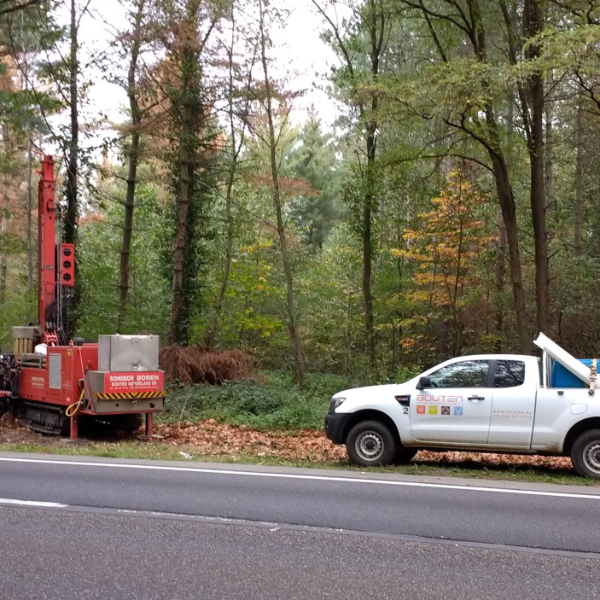Soil analysis at a former Arsenic factory in Bocholt

Following the exploitation of a former arsenic factory at a site in Bocholt (Limburg - Belgium), the soil is severely contaminated. In the past, the OVAM (Public Waste Agency of Flanders) implemented precautionary measures to counteract the further spread of the contamination by heavy metals and to limit any risks for surrounding residents.
In 2018, following a public tender procedure, OVAM appointed Witteveen+Bos - independent soil remediation expert. Our specific assignment was to perform an exploratory and descriptive soil analysis at the site according to a strict schedule.
Inventory of the contamination plume and the need for remediation
Witteveen+Bos initially investigated the high-risk locations of the former arsenic factory and asphalt production plant in an exploratory soil analysis. The site was completely covered in foil as part of the precautionary measures implemented in 2001. For the sampling strategy as part of the exploratory soil analysis, the site was approached as a landfill site, to avoid drilling into the foil. As a result, the monitoring wells were positioned around the site. We performed various measurements during the descriptive soil analysis.
The various contamination plumes were identified by combining these results with measurement results from previous studies:
- A contamination plume caused by atmospheric deposition;
- A contamination plume in the groundwater;
- Contamination of the solid part of the soil;
- Contamination of the surrounding waterways caused by discharge during the exploitation;
- Contamination caused by application of arsenic slag.
Once we had gained insight into the contamination, we analysed the risks of the contamination to humans, animals and the environment and determined the need for remediation.
Complex geology demands an adequate approach
The geology at the factory site is complex, due to underground fault lines. A geohydrological study, performed simultaneously with the descriptive soil analysis, revealed that these fault lines had a reduced permeability to groundwater.
This has resulted in a downward gradient of the groundwater, which has caused a very strong vertical distribution of the contamination in the groundwater. This in combination with the sandy soil - with various gravel layers - and the time since the start of the exploitation have resulted in a very extensive plume, both in a horizontal and vertical direction. As a result, we were forced to limit the analysis of downstream contamination to a depth of 40-50 m-mv.
In addition, the wind had also deposited dust, soot and soil particles. Consequently, the topsoil layer in a South-Easterly direction was found to be contaminated by arsenic and other heavy metals. This resulted in a plume measuring a total of +/- 3 km in length.

Spatial presentation of results, using 3D visualisation
Witteveen+Bos processed the results of the groundwater analysis and the analysis of the solid part of the soil in a 3D model.
Such 3D visualisations provide a spatial presentation of the complexity of the contamination. One major advantage is that this provides a better understanding of the complex contamination situation and this can be used to make correct decisions about further analysis. In combination with an extensive groundwater model, which was produced here, this truly provides added value for a thorough analysis.
Transparent communication
Considering the complexity of this project, we - together with OVAM - aimed to provide transparent communication to the surrounding residents.
This was essential in providing clarity and allaying any concerns. Furthermore, we recommended instructions for use in the descriptive soil analysis, to ensure everyone’s safety and thus correctly inform the surrounding residents about potential risks.
Do you suspect that your industrial estate contains contaminated soil? Or has the government already ordered you to tackle such problems? Witteveen+Bos is an accredited Type II soil remediation expert. With our descriptive soil analysis, we can provide fast, efficient and discrete insight into the problem.

More Information?

Our projects
Every year we work on almost 5,000 projects on water, infrastructure, environment and construction.
